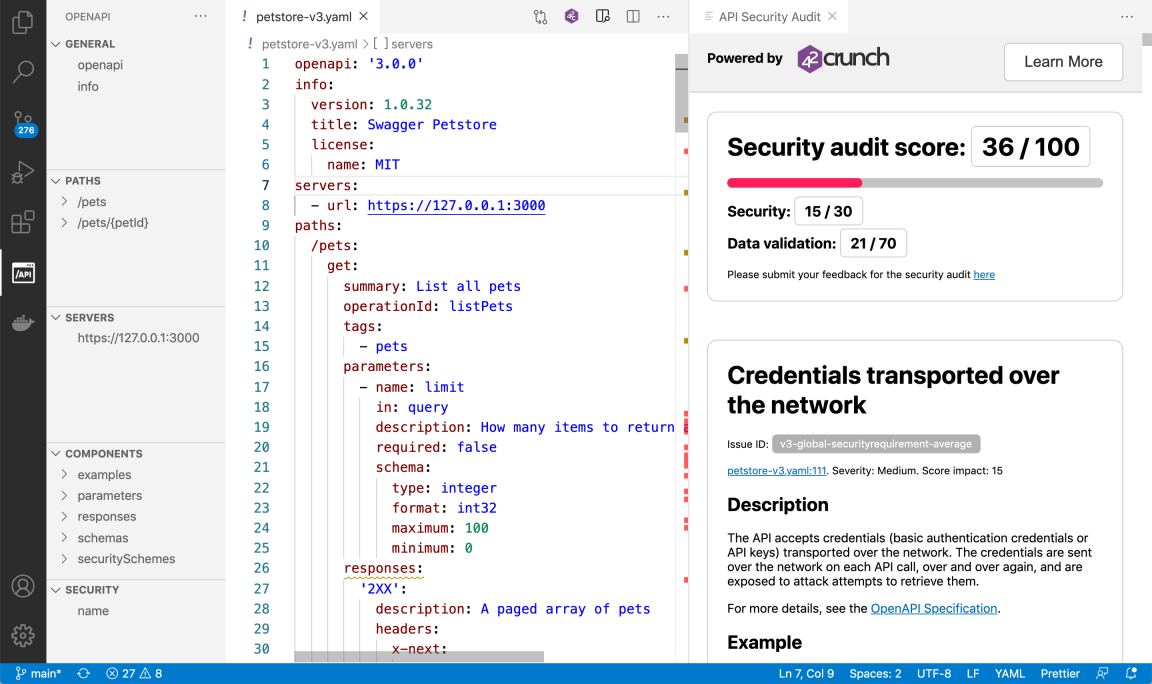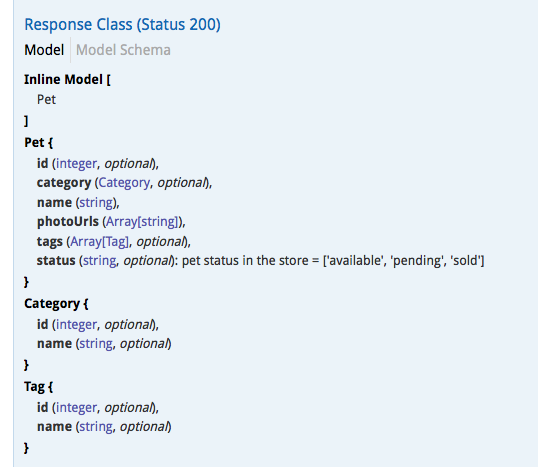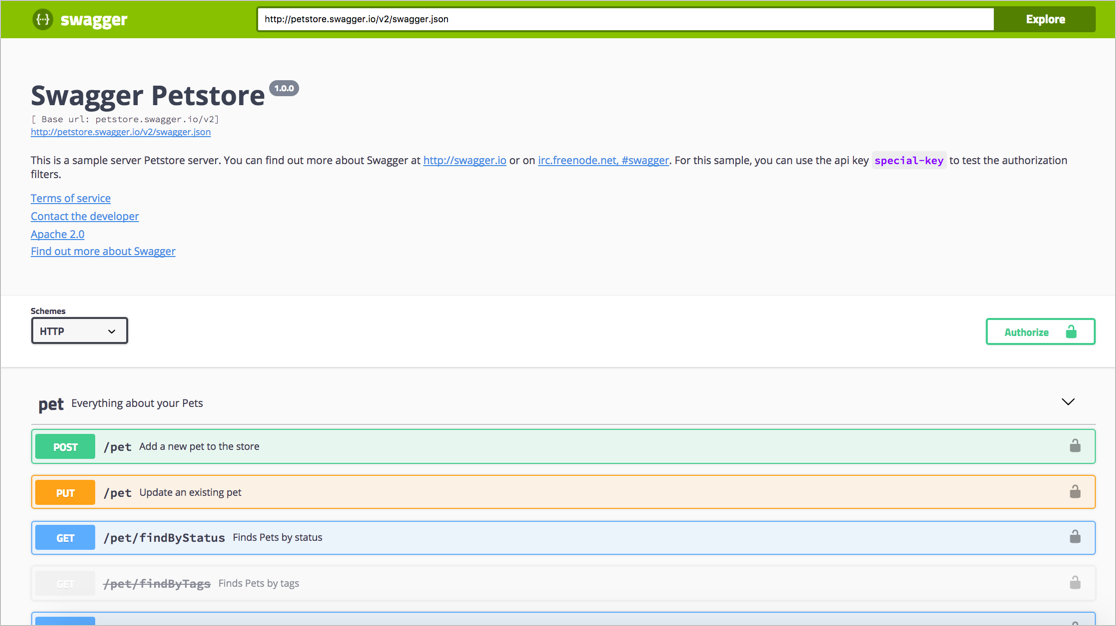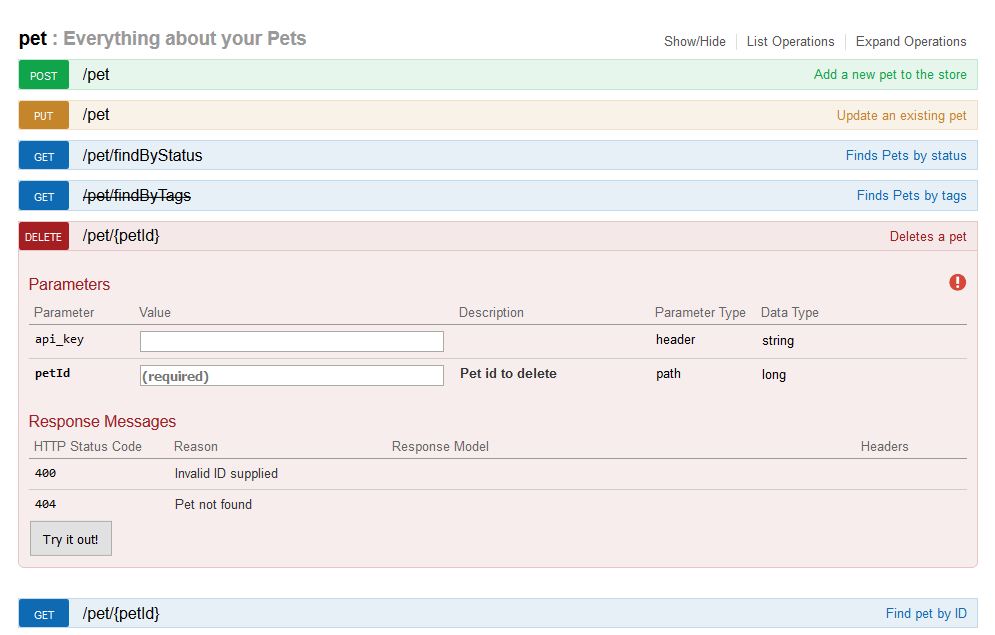

#Pet store swagger editor yaml code
Problem: while OpenAPI is great for describing APIs, generating client SDK code and defining your API contracts, it's definitely not a great experience to write OpenAPI documents from scratch.Įven with the use of references, OpenAPI's mechanism to avoid repetition, a simple document with less than 10 endpoints described ends up at over 1,000 lines for us.
#Pet store swagger editor yaml update
:param pet_id: The id of the pet to update from the store :param pet_id: The id of the pet to remove from the storeĭef update_pet (pet_id, Pet ) : # noqa: E501 """Update and replace a pet in the store price ), 200 except KeyError :ĭef remove_pet (pet_id ) : # noqa: E501 """Remove a pet in the store

:param pet_id: The id of the pet to retrieve append (current_pet ) return pets_in_store, 200 def get_pet (pet_id ) : # noqa: E501 """Get a pet in the store pet/, 201 def get_all_pets ( ) : # noqa: E501 """Gets all pets in the storeĬurrent_pet = Pet ( id =pet, breed =pet, name =pet, price =pet ) Swagger : "2.0" info : version : "1.0.0" title : "Pet Store" basePath : "/api/v1" tags : - name : "pet" schemes : - "https" consumes : - "application/json" produces : - "application/json" paths : Specification for an imaginary pet store. We will be using OAS version 2 because swagger-codegenĪt the moment cannot generate models for flask for OAS version 3. I prefer this approach because I have all my plugins setup (colour scheme, vim bindings etc). Plugin, which allows you to write the OAS and preview the interactive document at the same time. My preferred way of writing an OAS is using VSCode with the This for work and confidentality matters. Run the swagger-codegen manually to generate the models locally, if you're using NOTE: If you use the editor to generate models (using swagger-codegn), it makes an API call toĪ remote server. OAS and you can see the OAS as an interactive document (half the screen for the editor and halfįor the interactive document). We can use the online swagger editor, which allows us to edit the There are a few tools that can make this a bit easier. We will use YAML to do this because I think it's much easier to readĪnd almost all specifications you see will be written in YAML (not JSON). In this article our code will be using the following structure.įirst thing we do is define our OAS. However everything in this article should be applicable NOTE: At the time of writing this article OAS3 support had just come out for codegen. Have access to all the functionality we would have when developing a normal Flask web API. Simple wrapper around Flask reducing the boilerplate code you have to write as well. Is a Python library that "automagically" handles HTTP requests based on your OAS.

Let's very quickly go over the tools and libraries we will use. The aim of this approach is that you update your specification file first. Now what happens if youįorget? Now your API is different to what's documented which can be a real pain for your users. You have to update your documentation or your openapi yaml/json file. One of the main problems you'll find with using openapi is that every time you update your API Which will try to minimise the differences between what's defined in the API I will go over an API/documentation first approach to building a RESTful API in

We will be using Flask, Swagger Code-Gen (OpenAPI) and Connexions. In this article we will go over a documentation first approach to building APIs. RESTful APIs are very popular at the moment and Python is a great language to develop


 0 kommentar(er)
0 kommentar(er)
